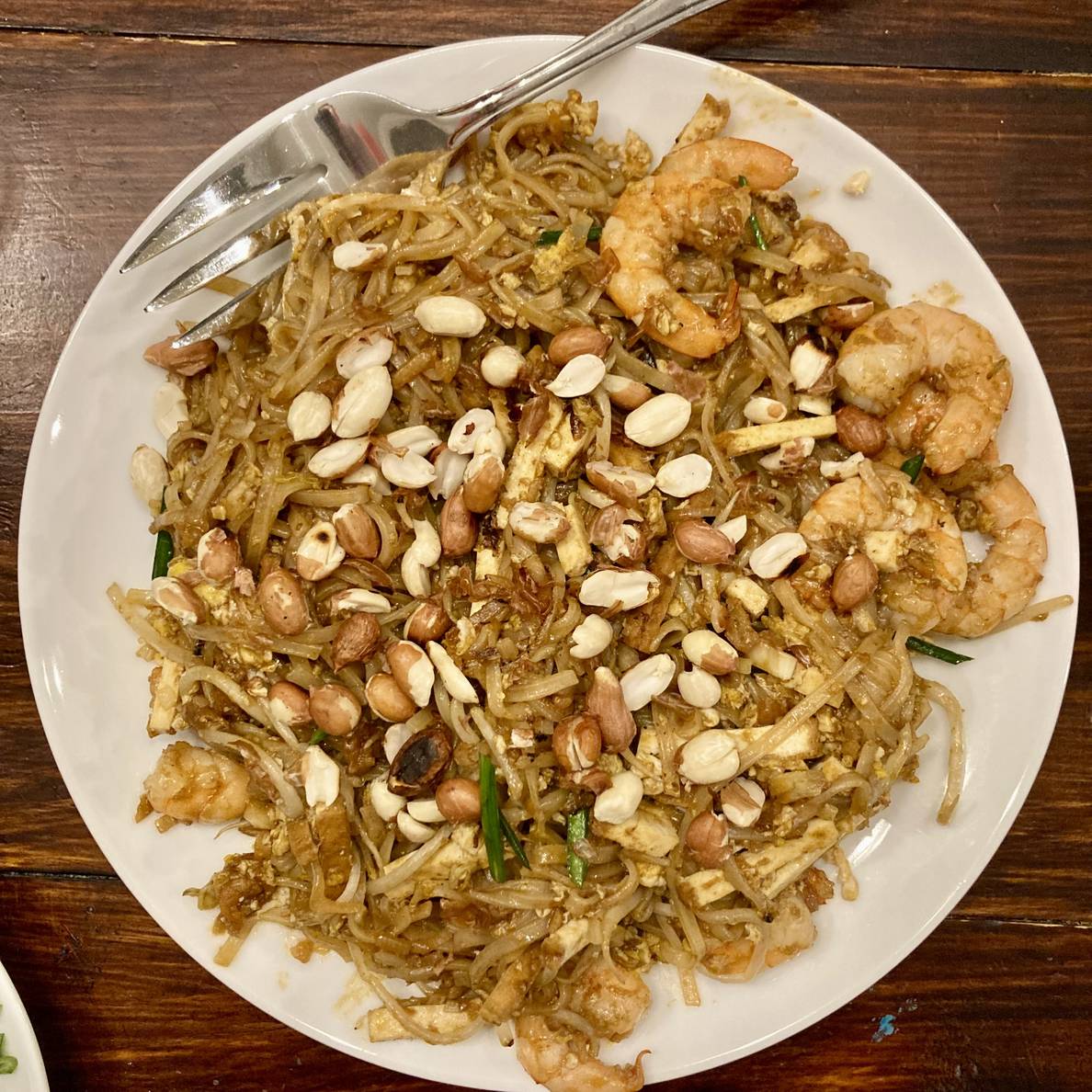
This past week I made J. Kenji Lopez-Alt’s Pad Thai recipe from The Wok. Like pad see ew, I’ve been making Rachel Cooks Thai’s pad Thai recipe since 2016.
Unlike pad see ew, Kenji calls for thinner (1/4-inch wide), dried rice noodles for pad Thai, which are much easier to find than any of the fresh noodles he’s called for in other noodle recipes.
Kenji also calls for shrimp paste with this comment in his “The Pad Thai Pantry” section:
My friend Leela Punyaratabhandu, author of several excellent Thai cookbooks…recommends a bright red shrimp paste in oil, which I’ve only ever found online.
Interestingly, this “bright red shrimp paste in oil” is also easier for me to find than fresh noodles. I’ve been buying it from Your DeKalb Farmers Market since 2016, and the nearby First Oriental Market also carries it. My understanding is that this shrimp paste is actually the head meat of shrimp (tomalley?), and I can confirm it is very different from fermented shrimp paste, gapi.
Kenji recommend tamarind pulp as the best option for tamarind, with whole fruit second best, and concentrate last. I’ve made tamarind from the pulp before, and made a tamarind agua fresca with whole pods once, but almost always use the concentrate instead. Making from pulp felt like I needed to know what I was doing, because none of it is exact. It’s basically “mash together with hot water and strain so it’s the right consistency” which meant I needed to know the right consistency. Kenji has very good instructions for it. For this recipe, I used the pulp. For Kenji.
Kenji calls for soaking the noodles in hot water for about 20 minutes. Working with dry rice noodles is usually a version of soaking or blanching, and I find soaking in hot water to be more forgiving on the timing. There is much less risk of over-“cooking.”
The stir-fry starts with garlic and onions, and then the noodles are added with a sauce of palm sugar, fish sauce, the tamarind, and ground Thai chile. Small dried shrimp, the shrimp paste, and preserved radish are also added at this time. All that gits tossed together until half the sauce is absorbed.
Everything gets pushed to the side and the shrimp are cooked in the now-empty space. Things were getting kind of dry for me at this point, and I think the moisture from the shrimp helped. The shrimp then get tossed with everything else.
Everything gets pushed aside again and eggs are cooked and scrambled in the now-empty space. Then bean sprouts, garlic chives, and super firm tofu are added, and everything gets tossed until some things wilt and other things char, the sauce is absorbed, and the noodles are soft.
The noodles are served with peanuts, lime wedges, more garlic chives and bean sprouts and what Kenji calls “Bangkok-style table condiments:” prik nam som, nam pla prik, sugar, and Thai chile flakes.
The result was very good, and very much like the version we’ve been making. With Kenji’s instructions, I might switch to tamarind pulp for the future. I’ll likely leave out the dried small shrimp in the future (Kenji lists them as optional anyways), or at least chop them into smaller pieces. I have them on hand for some other recipes, but as they were they were a bit too chewy.
I’ll be happy to make this one again.
I am cooking my way through J. Kenji Lopez-Alt’s The Wok cookbook. Read more about it.
